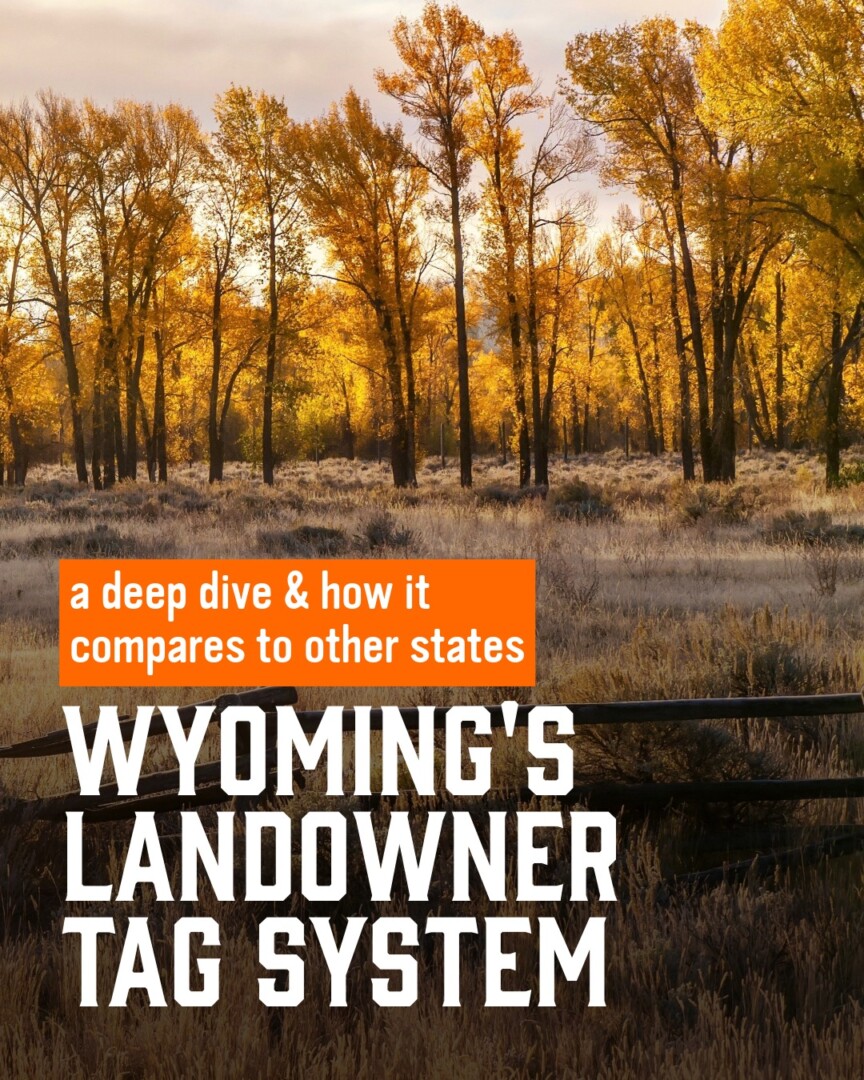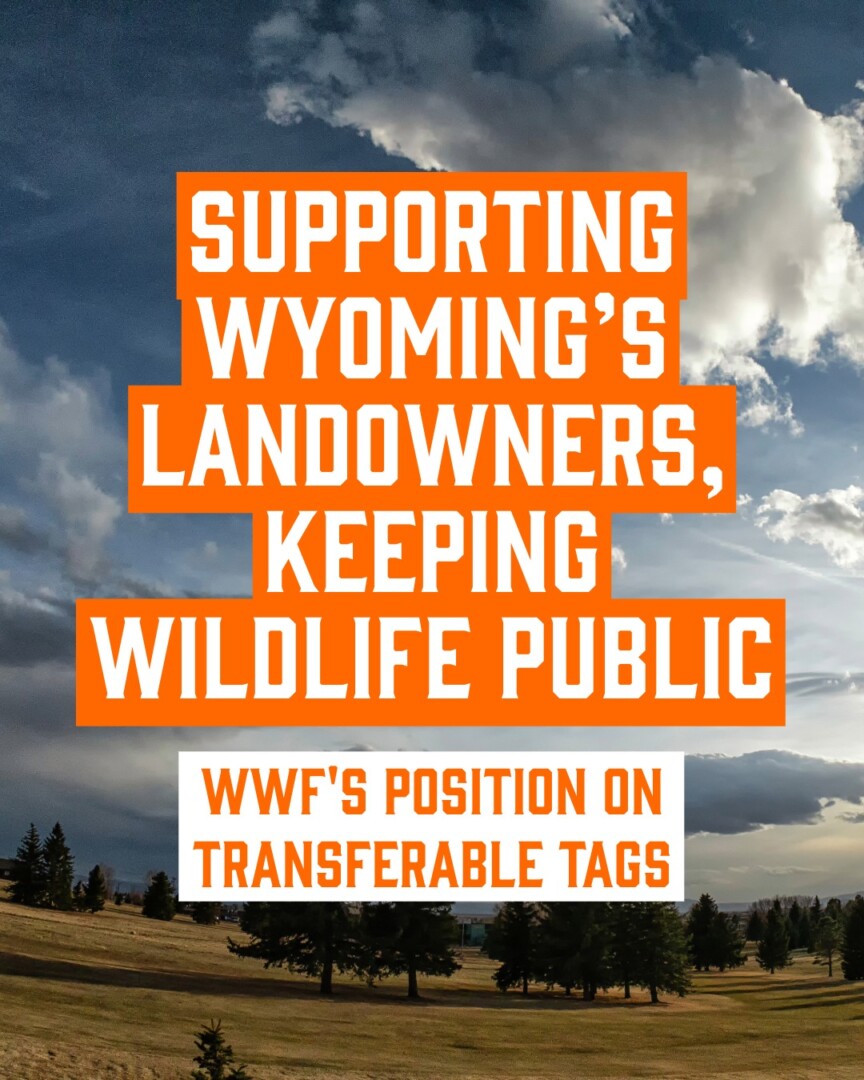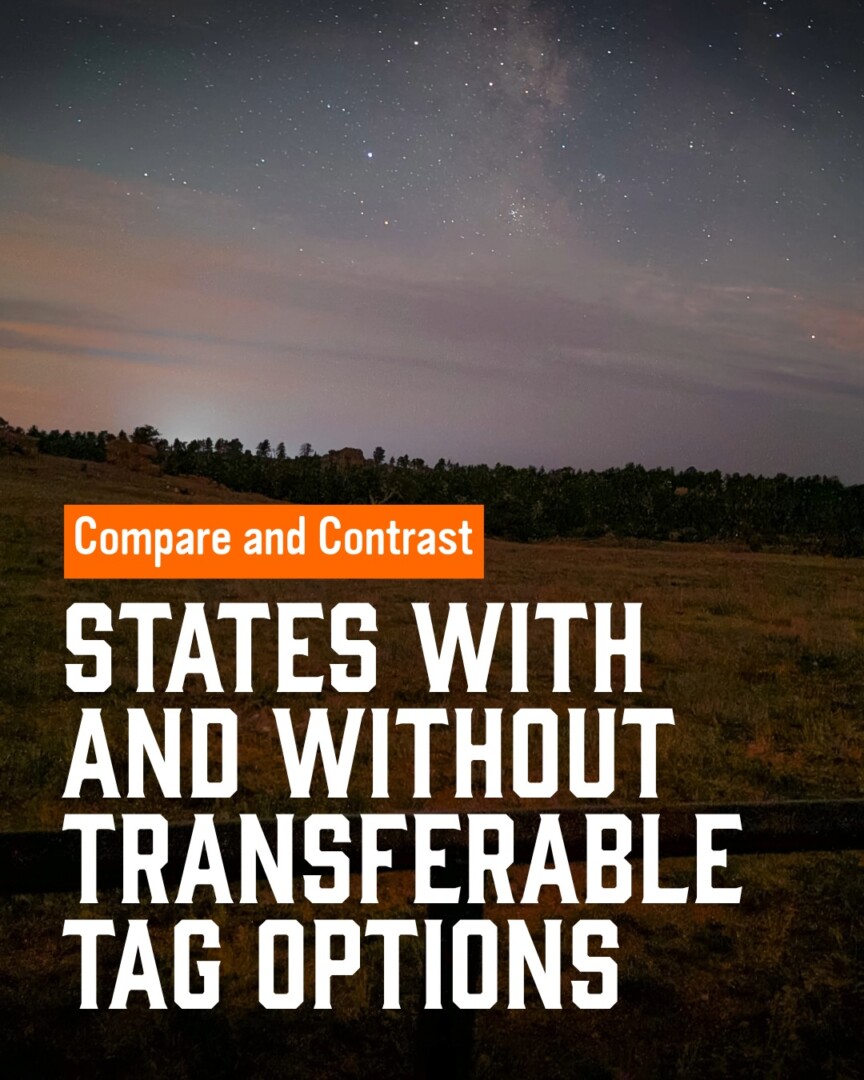Across the West, landowners play a vital role in sustaining wildlife. They provide forage, water, cover, and migration routes that keep herds healthy and on the move. Many states offer “landowner hunting tags” as a way to recognize that contribution.
But not all landowner tag systems are the same, and understanding the differences helps explain why Wyoming’s approach has worked so well for both ranchers and hunters.
What Are Transferable Landowner Tags?
In simple terms, transferable landowner tags allow a landowner to sell or give their hunting tag to someone else, often through a private market.
- The buyer—who might live in another state—can use that tag to hunt in a specific unit (landowner tags allow for unit wide hunting, not just on the private property of the landowner), often skipping the public draw system entirely.
- Prices can range from a few thousand dollars to tens of thousands, depending on the species, season, and area.
Proponents argue this creates a new income stream for landowners. Opponents warn it creates a two-tiered system, one for those who can afford to buy access and another for everyone else.
How Other States Handle Transferable Tags
Several western states have transferable or market-based landowner systems:
- New Mexico’s EPLUS Program: Landowners can sell “authorizations” that are converted into private-land-only or unit-wide tags. Roughly 8,000 such tags are issued annually, creating a significant side market for elk hunts.
- Colorado’s Landowner Voucher Program: Eligible landowners can transfer vouchers to others, who redeem them for tags. In trophy units, vouchers can sell for thousands of dollars.
- Utah’s Cooperative Wildlife Management Unit (CWMU) System: Landowners or associations control certain tags and can sell or lease them to hunters, often tied to access on private land.
- Nevada’s Compensation Tag System: Landowners suffering verified wildlife damage receive transferable tags, which can be sold but are capped at 2.5% of total quotas.
Each of these systems has led to growing commercialization of wildlife opportunities, decreased draw odds for resident hunters, and tension between landowners and the public.
How Wyoming's system works
Wyoming’s approach is intentionally different and built on fairness and public trust.
- Landowner Licenses: Wyoming already provides special tags to qualifying landowners or their immediate family members. Landowners may also charge trespass fees to hunters who want to hunt on their land.
- These tags are non-transferable, they can’t be sold or given away.
- Landowners must own at least 160 contiguous acres that provide habitat for the species they apply for.
- These tags are drawn from the same limited quota as public tags and pulled from that limited quota before tags are opened up to the public, meaning they are already a built-in recognition of habitat stewardship. In cases where there are a lot of landowner tags taken out, the opportunity for non-landowners to pull coveted tags is reduced.
This system balances respect for landowners with opportunity for everyday hunters. It ensures that wildlife remains a shared resource, not a commodity.
Why Wyoming's Model Works
Wyoming’s system embodies what makes this state exceptional:
- Wildlife is public. Every elk, deer, and antelope belongs to all of us.
- Opportunity is earned, not bought. The draw system gives every hunter a fair shot, whether they own land or not.
- Landowners are partners, not competitors. Private lands are honored through access programs, conservation easements, and voluntary incentives - not commercialization.
- Science and stewardship guide decisions. The Wyoming Game and Fish Department manages wildlife for biological health, not market demand.
That’s the Wyoming way and it’s one worth defending.
A Better Path Forward
Instead of selling tags, WWF supports creating voluntary, incentive-based programs that help landowners stay on the land while keeping wildlife public. These could include:
- Habitat stewardship payments or conservation tax credits.
- Enhanced Access Yes! compensation.
- Cost-share and legacy programs for wildlife-friendly ranch management.
These solutions reward wildlife stewardship without privatizing wildlife or undermining opportunity for everyday hunters.
The Bottom line
Wyoming doesn’t need to follow other states down the road of commercialization. Our wildlife model—rooted in science, fairness, and shared responsibility—is working.
By honoring landowners as essential partners and keeping wildlife in public trust, we can ensure that the next generation of Wyoming hunters - whether they come from a ranch in Sublette County or a cul-de-sac in Casper - has the same chance to experience what makes this place extraordinary.
Wyoming’s hunting heritage is worth the work. And together, we’re up for it.




